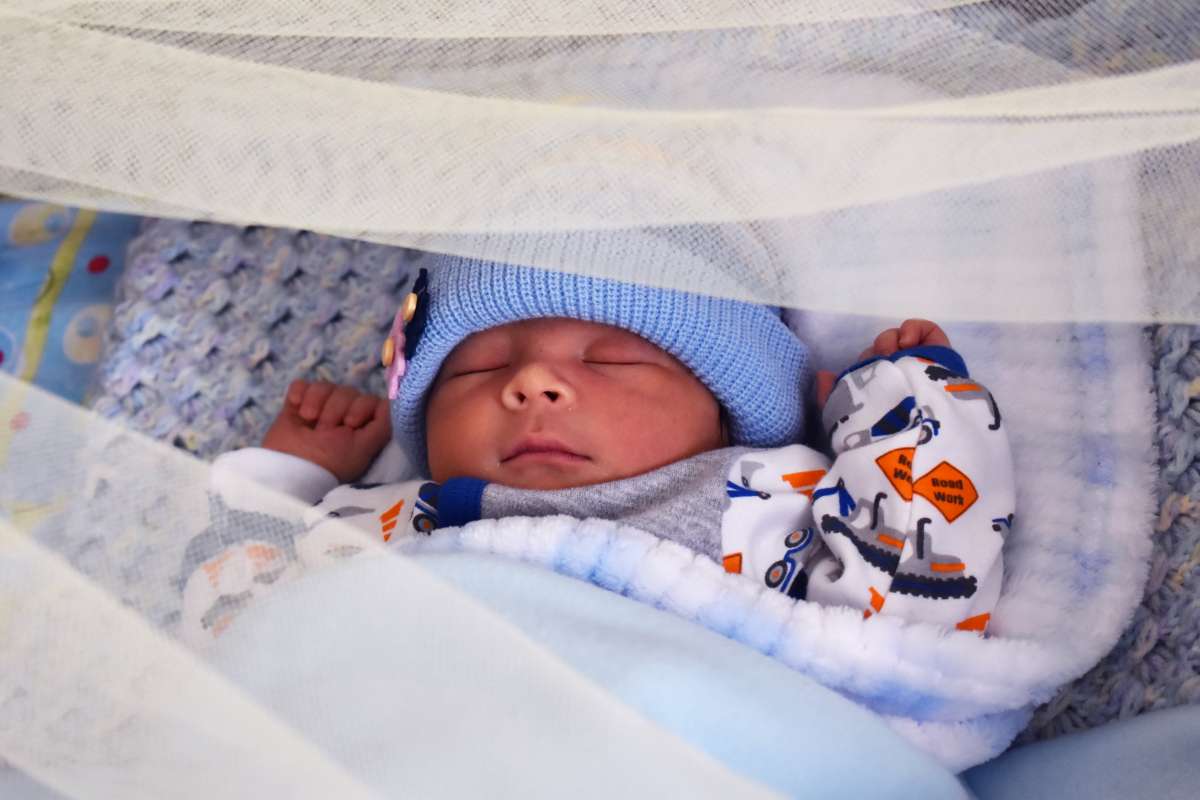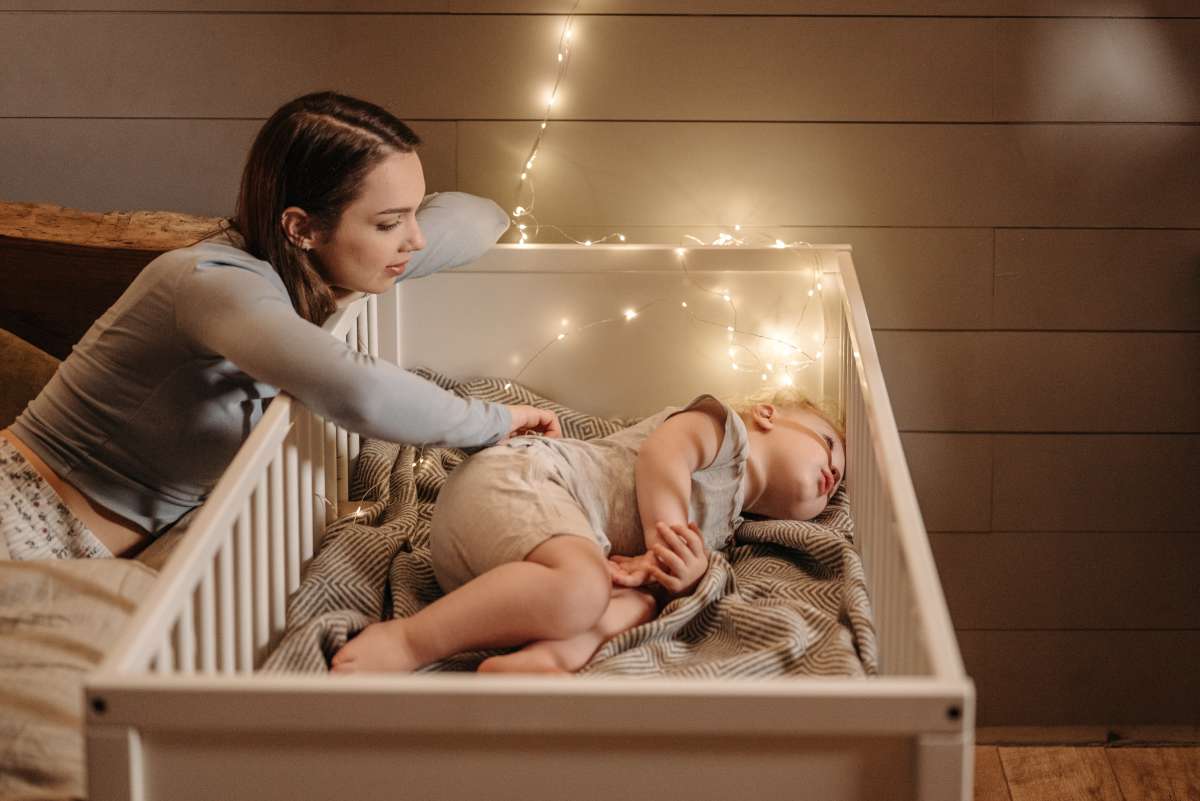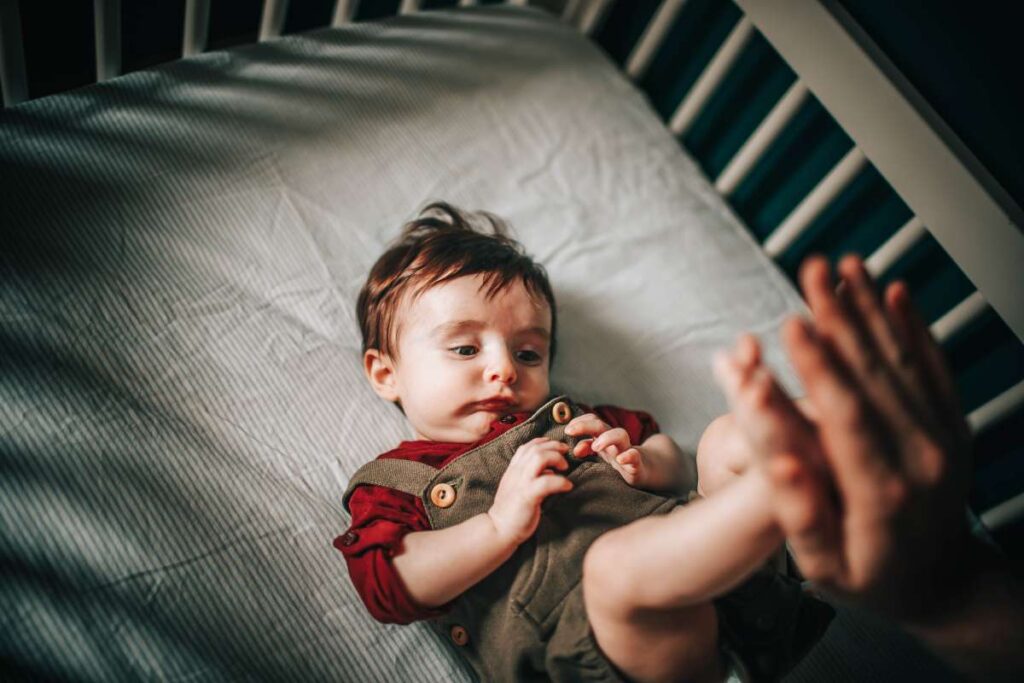There are a lot of things to think about while deciding on the best mattress for your baby's crib.
They need to be safe, firm, and flat, but they also need to fit snugly with no gaps at the borders, allow air circulation, and prevent leaks. As a result, parents have a lot of options to consider when making a purchase, including different types of springs and coils, foam, and the rising popularity of eco-friendly and natural mattresses.
There is no universally accepted cot or mattress size; however, most cot beds may accommodate a mattress measuring up to 60 by 120 centimetres (cm) or a mattress measuring 70 by 140 centimetres (in) in size.
FAQs About Baby Nursery
The prices of cot mattresses range anywhere from about $30 to $300. But price and quality don't necessarily go hand in hand. The cheapest Best Buy costs less than $50, while the most expensive. Don’t Buy is more than $200. Quality and safety don't always go up with a price, either, so it's worth looking at this before the price.
It would help if you made sure the mattress fits your cot or cot bed frame snugly. A gap bigger than 3cm (1.2 inches) is a potential hazard for your baby as their arms, legs or head could get trapped in the gap. Not all mattresses come in the same standard size, but your cot or cot bed should specify which size it requires.
Many mattresses (mainly of the spring and pocket-spring varieties) are made to be reversible.
Each side of the mattress will be specially designed to accommodate the needs of your rapidly growing baby. That's because a cot mattress might be used for five or six years, during which time your baby will more than triple in weight.
Because of this, manufacturers often design cot mattresses with one side specifically for babies and the other for toddlers or children. Typically, one side will have springs and foam designed to be sturdy but gentle for a baby to sleep on for the first 12 months.
The reverse side will have sturdier material to cope with a growing toddler. The mattress should indicate which side is suitable for what age group.
Maybe you like the idea of putting your baby to sleep on an organic or natural mattress. Manufacturers claim to use all-natural materials with no chemicals or synthetics.
'Organic' is commonly understood to mean that the materials haven't been subjected to chemicals or pesticides in any production stage. But manufacturers can use the terms ‘natural’ and ‘organic’ on products without certification. There are legal requirements for the labelling of organic foods, but not these types of products.
That said, many organisations offer certification for natural and organic claims. The Little Green Sheep, for example, certifies some of its materials through the Global Organic Textile Standard (GOTS). It's down to the certification bodies such as this to make sure the suppliers of materials comply with its guidelines for organic.
We advise reading the fine print carefully, as the term organic or natural can be used to market a full product when, in fact, only some of the ingredients or materials have been certified as organic. Or, in many cases, the terms are used without the added security of a certification. In this case, you have to trust that the manufacturer is honest about its claims.
A travel cot mattress should be no more than 10cm thick, and you should expect the mattress in a crib or Moses basket to be no more than 5cm thick. These thicknesses are specified in BS 1877:Part 10:1997, the cot mattress safety regulations.

Insights Into The Decision-Making Process For A Cot Mattress
The Confidence
Ideally, your mattress should be level and firm. It should fit your baby's cot without leaving any room for fingers or toes to get caught. Keep a watch out on swing tickets and product specs for the BSI number BSEN716 as this is the standard for cribs, prams, and beds.
Extra blankets or comforters in the cot, such as duvets, have been linked to an increased risk of sudden infant death syndrome. Rather to using multiple blankets or coverings, a baby sleeping bag is the best choice for keeping them warm. As your child grows, you can switch to a duvet.
The Comfort Level Of The Bed
It's crucial to buy a mattress that's the proper size and form for your infant so that their limbs won't get caught. To make sure you can safely tuck your infant in, there shouldn't be more than a 3-centimeter gap around the borders or sides. Additionally, blankets shouldn't go any higher than your baby's shoulders.
There are several options for cots and cot beds, and most of them come with mattresses that are specifically sized to match the cot.
There may be stickers on the bottom of some of them that tell you what size to get. While the mattress in your baby's crib or Moses basket will be thinner, you'll still need a depth of 8 to 10cm for it to provide adequate support.
If the size of the infant mattress you need is not readily available, some retailers will make one to order. Make sure the safety and performance standards (Part 10 1997) and flammability standards (BS 7177 1996) of any mattress you buy.
Airflow Capacity
Overheating has been linked to an increased risk of sudden infant death syndrome, so it's important to choose a mattress with high breathability to assist your baby control their temperature. The moisture from your baby's sweat will be drawn away by the mattress's breathable material.
A hypo-allergenic or anti-allergenic mattress cover, which can be washed at 60 degrees to remove potentially allergenic dust mites, may be worth considering if asthma or allergies are a problem in your household.

The Material The Mattress Is Made From
Mattresses for cots come in a wide variety of styles and materials. In accordance with recommendations from The Lullaby Trust, make sure your baby's mattress is firm, flat, and in good shape with no visible indications of wear and tear.
- Foam: Even the cheapest foam mattresses are usually rather light and supportive, especially for the price.
- One side of these items is typically made of PVC, a wipe-clean material. They lose their form with time, therefore using them in a Moses basket or crib for an extended period of time is not recommended.
- Traditional and still a favourite among many parents, coil-sprung mattresses combine a supportive coil spring core with foam or felt layers for greater breathability and comfort. They hold their shape and provide good support.
- The springs in these mattresses are enclosed in individual pockets, much like the coil springs in traditional mattresses, for increased support and durability. Unless your infant will sleep on the mattress for many years or you intend to use the mattress for another child, these are a costly option that is not cost-effective.
- Some mattresses are designed with two different sides, one that is flatter and firmer for infants and toddlers and another that is softer and more suitable for older children.
- Organic mattresses are great for households with allergy sufferers because they are crafted from chemical- and allergen-free natural materials like bamboo. In addition to providing excellent support, they will be antimicrobial, wick away sweat, and let air circulate freely.
The outer fabric layer and the waterproof side of a mattress are standard features for infants and young children. Keep in mind that not all rugs are easily detachable for washing, so you may need to resort to wiping or vacuuming them on a regular basis. You could benefit from a specialised mattress cover, which can be removed for washing.
Covers with built-in protection against mould, mildew, and dust mites are available, as are covers that are hypoallergenic, heat-regulating, and moisture-wicking. It's important to consider your financial situation, your personal preferences, and the length of time you intend to keep the mattress while making your decision.
Conclusion
There is no universally accepted cot or mattress size; however, most cot beds may accommodate a mattress measuring up to 60 by 120 centimetres (cm). The BSI number BSEN716 is the standard for cribs, prams, and beds. There are several options for cots and cot beds, but most of them come with mattresses that are specifically sized to match the cot. Make sure the safety and performance standards (Part 10 1997) and flammability standards (BS 7177 1996) of any mattress you buy. Mattresses for cots come in a wide variety of styles and materials.
Make sure your baby's mattress is firm, flat, and in good shape. It's important to consider your financial situation, your personal preferences, and the length of time you intend to keep the mattress.
Content Summary
- There are a lot of things to think about while deciding on the best mattress for your baby's crib.
- There is no universally accepted cot or mattress size; however, most cot beds may accommodate a mattress measuring up to 60 by 120 centimetres (cm) or a mattress measuring 70 by 140 centimetres (in) in size.
- Extra blankets or comforters in the cot, such as duvets, have been linked to an increased risk of sudden infant death syndrome.
- Rather to using multiple blankets or coverings, a baby sleeping bag is the best choice for keeping them warm.
- As your child grows, you can switch to a duvet.
- The Comfort Level Of The Bed
- It's crucial to buy a mattress that's the proper size and form for your infant so that their limbs won't get caught.
- To make sure you can safely tuck your infant in, there shouldn't be more than a 3-centimeter gap around the borders or sides.
- There are several options for cots and cot beds, and most of them come with mattresses that are specifically sized to match the cot.
- While the mattress in your baby's crib or Moses basket will be thinner, you'll still need a depth of 8 to 10cm for it to provide adequate support.
- If the size of the infant mattress you need is not readily available, some retailers will make one to order.
- Make sure the safety and performance standards (Part 10 1997) and flammability standards (BS 7177 1996) of any mattress you buy.
- Airflow Capacity Overheating has been linked to an increased risk of sudden infant death syndrome, so it's important to choose a mattress with high breathability to assist your baby control their temperature.
- The moisture from your baby's sweat will be drawn away by the mattress's breathable material.
- The Material The Mattress Is Made From Mattresses for cots come in a wide variety of styles and materials.
- In accordance with recommendations from The Lullaby Trust, make sure your baby's mattress is firm, flat, and in good shape with no visible indications of wear and tear.
- Foam: Even the cheapest foam mattresses are usually rather light and supportive, especially for the price.
- The springs in these mattresses are enclosed in individual pockets, much like the coil springs in traditional mattresses, for increased support and durability.
- Unless your infant will sleep on the mattress for many years or you intend to use the mattress for another child, these are a costly option that is not cost-effective.
- The outer fabric layer and the waterproof side of a mattress are standard features for infants and young children.
- You could benefit from a specialised mattress cover, which can be removed for washing.
- It's important to consider your financial situation, your personal preferences, and the length of time you intend to keep the mattress while making your decision.






